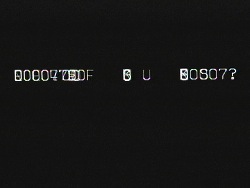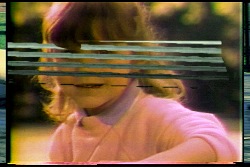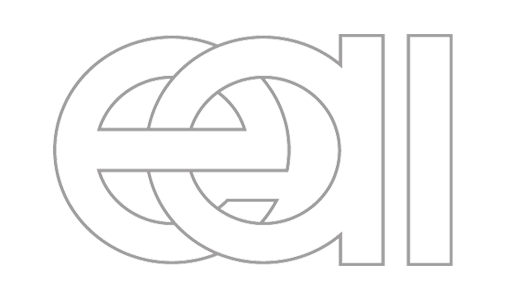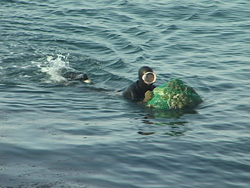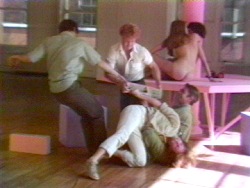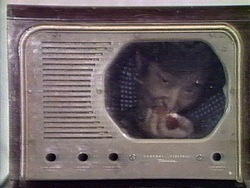Search Results
Search Results
Title Results
Your search returned 702 Titles
Devour is a dual-channel version of the artist's multi-channel video projection installation of the same name. Schneemann notes that this work brings together "a range of images which contrast evanescent, fragile elements with violent, concussive, speeding fragments... political disasters, domestic intimacy, and ambiguous menace."
Based on the personal experiences of individuals from Hong Kong, the former British colony that "reunified" with China in 1997, Diasporama is an experimental documentary that addresses issues of the diasporic condition. In a series of intimate interviews that explore the relationship of the...
Using Bell Lab's pioneering research facilities, Paik creates a starkly minimal experiment in computer imaging, in which a shifting dot appears on a black ground. A. Michael Noll, a researcher and Professor Emeritus at the Annenberg School for Communication & Journalism at the University of...
This video was created and released into distribution as one work in a solo exhibition that Price held simultaneously at Friedrich Petzel Gallery, Reena Spaulings Fine Art, and Electronic Arts Intermix in New York in September 2006. The video serves as a sampler of Price's editioned videos to date, all of which have been sold through the galleries. Here, fragments of sound and image from the editions have been brought together, yielding a montage that, while bordering on incoherence, provides access to these publicly unavailable artworks. Price juxtaposes disparate authors, editing strategies, and histories, yielding a work in the essay-film tradition, at once lyrical and messy, highly-edited and arbitrarily composed.
"This recording was made using LoVid’s Sync Armonica, in collaboration with other video synthesizer and processing tools available at Signal Culture in Owego, NY, during LoVid’s residency there." -LoVid
"Transition from smile to no-smile, shot at 2000fr/sec. Camera shows only a CU of the mouth area." – Mieko (Chieko) Shiomi
Single-channel screen recording of a live bot performance on Instagram (conocophillips), November 26, 2019.
Jeju-do is the largest of Korean islands and lies between Korea and Japan. There, for hundreds of years, women dive without breathing apparatus to the ocean floor and collect shellfish, octopus, and urchins that they sell.
Conceptual artist Lawrence Weiner employs minimalist props and scenarios to stage an oblique drama. The performers enact a series of choreographed exercises; their physical interactions with one another, and with the distinctively colored and shaped objects in the space, evolve in shifting relationships that become a kind of language. A multi-layered soundtrack suggests linguistic, rhetorical and philosophical puzzles. This performance translates themes and strategies seen in Weiner's conceptual artworks into the realm of theater.
Documenta 6 Satellite Telecast
Joseph Beuys, Douglas Davis, and Nam June Paik
1977, 30 min, color, sound
Documenta, held every five years in Kassel,Germany, is one of the largest and most important contemporary art surveys. In 1977, Documenta 6 featured the first live international satellite telecast by artists. Performances by Nam June Paik, German conceptual artist Joseph Beuys, and Douglas...


